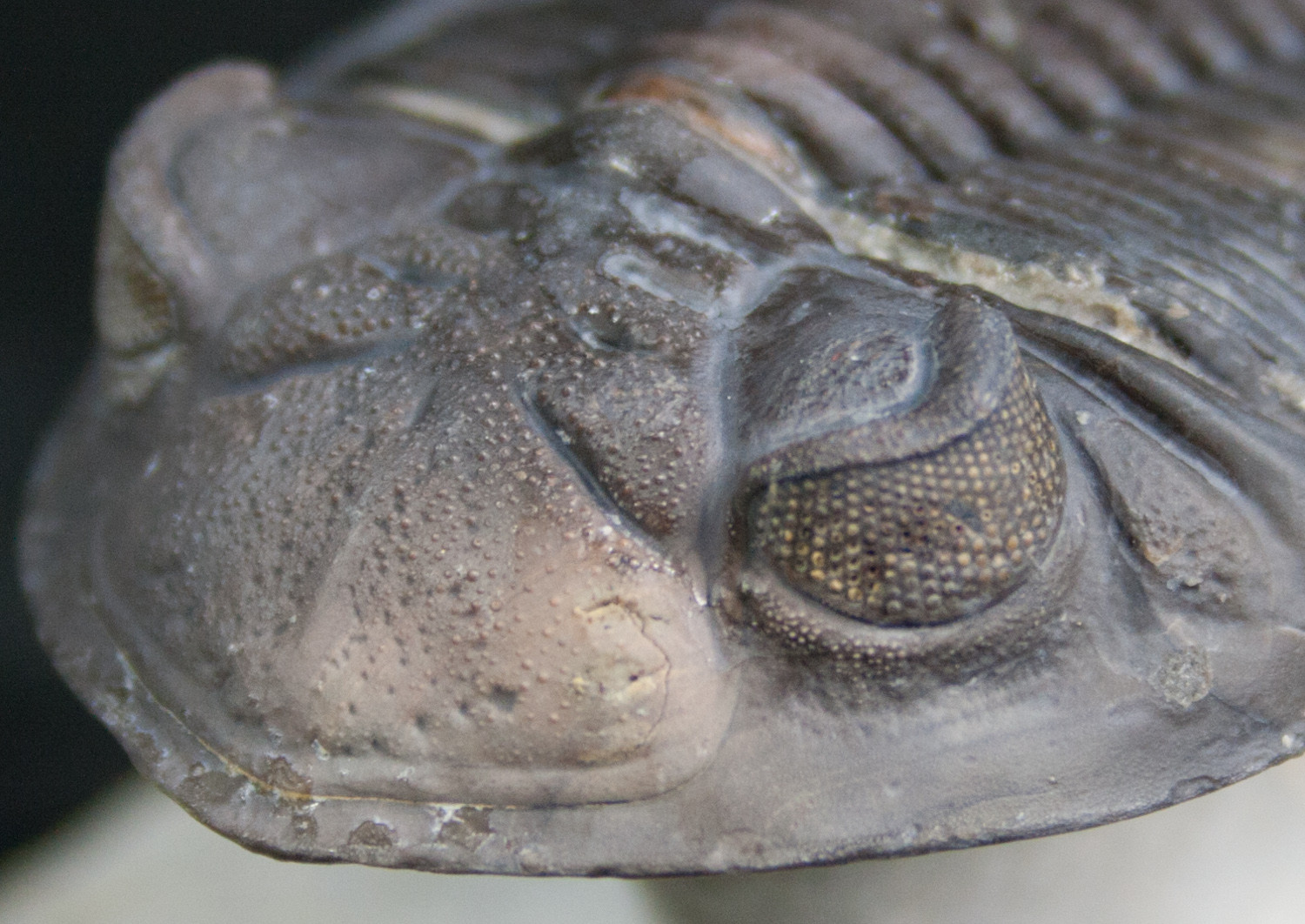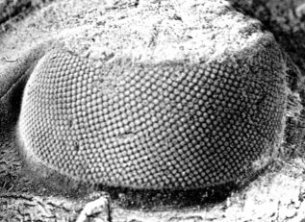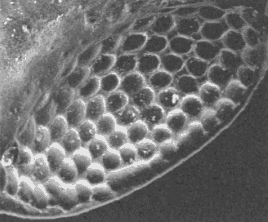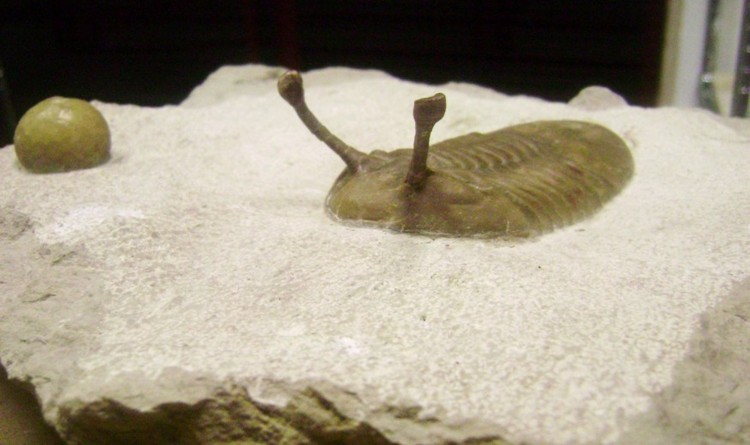Physics in the animal world: trilobites and their calcite “lenses”

Trilobites are a class of marine animals, extinct hundreds of millions of years ago. Scientists know 9 orders of trilobites, which include 150 families, 5 thousand genera and 10 thousand species. The closest modern analogues of trilobites in body structure are woodlice and horseshoe crab (by the way, “living minerals”). Most trilobites had a powerful shell. Mouth and legs were located on the lower side of the body, and eyes - on the top.
The eyes of most trilobites were very complex, and their structure was radically different from the eyes of modern animals. These animals did not have a crystalline crystalline lens; instead, trilobites had calcite mineral lenses. Currently, the only animals with mineral visual lenses are some of the currently existing brittle cameras and the Acanthopleura granulata mollusk. The complexity of the trilobite eyes was much higher than those of our contemporaries.
How do scientists figure out the structure of trilobite eyes? Due to the fact that they consisted of inorganic calcite, trilobite eyes are very well preserved. In the elemental lenses of the compound eye of fossil arthropods, calcite has an unusual crystal structure. A ray of light that goes at a certain angle is not refracted and is not divided into several rays. But the rays that fall on the eye of an animal from a different angle, are divided into two rays, which are refracted and transferred to the sensory cells exactly as needed for the subsequent formation of a common picture. Since the trilobite eyes were almost completely inorganic, they could not focus on various objects on their own. In most modern animals, focusing occurs automatically due to a change in the shape and size of the pupil and lens (of course, this applies only to those animals that have both a pupil and a lens).
')
The eyes of most trilobite species have a structure that is very similar to the structure of those optical structures that were created by Descartes and Huygens in the middle of the 17th century. The eyepiece of Huygens consists of two plane-convex lenses arranged in flat parts to the eye of the observer and separated by a certain interval. Lenses are called eye lenses and field lenses. The focal plane is located between the two lenses. It was invented by Christian Huygens at the end of the 1660s and was the first compound (multi-lens) eyepiece. Huygens discovered that two intermittently separated lenses can be used to make an eyepiece with zero chromatic aberration. These aspheric anaplanate lenses can optimize the image formed by the individual elements of the eye, collecting light rays better than other systems. Among trilobites there were species that had no eyes at all (they probably lived in the dark or in very muddy water), for example, in the species Agnostus, or species that had primitive eyes.
But most of the other eyes were developed. They are divided into three types :
 Eyes of holochroic type. They consisted of a large number of elementary "facets", we are talking about 15,000 prismatic lenses or even more of them. All elementary lenses were in direct contact with each other, without opaque separating membranes. A transparent protective membrane covered the eyes of this type just above.
Eyes of holochroic type. They consisted of a large number of elementary "facets", we are talking about 15,000 prismatic lenses or even more of them. All elementary lenses were in direct contact with each other, without opaque separating membranes. A transparent protective membrane covered the eyes of this type just above. Eyes schizohroicheskogo type. They consisted of about 700 elements each and were separated by opaque walls. Individual “facets” were rounded or polygonal lenses. The eyes were covered on top of a transparent membrane, which probably protected the entire organ from damage. All early trilobite species had eyes of the holochroic type, which then evolved into a schizochroic type of eyes.
Eyes schizohroicheskogo type. They consisted of about 700 elements each and were separated by opaque walls. Individual “facets” were rounded or polygonal lenses. The eyes were covered on top of a transparent membrane, which probably protected the entire organ from damage. All early trilobite species had eyes of the holochroic type, which then evolved into a schizochroic type of eyes. Abatochroic type of eyes. It was much less elements (no more than 70). It was all the same rounded or polygonal lenses, which differed from the lenses of the eyes of the schizochoic type in size. Each elemental lens was separated from the neighboring thin opaque membrane (sclera). These eyes were smaller in size than the previous two types, but provided their “owners” with good vision. Probably, the abhochroic eyes were in those trilobites who lived at the bottom or in relatively muddy water.
Abatochroic type of eyes. It was much less elements (no more than 70). It was all the same rounded or polygonal lenses, which differed from the lenses of the eyes of the schizochoic type in size. Each elemental lens was separated from the neighboring thin opaque membrane (sclera). These eyes were smaller in size than the previous two types, but provided their “owners” with good vision. Probably, the abhochroic eyes were in those trilobites who lived at the bottom or in relatively muddy water.Eyes of different types of trilobites differed in size and location. For example, in those animals that lived in the bottom of the soil, the eyes were located on stalks. They allowed the animal dug in the mud to see everything that was happening around. Many trilobites had an excellent overview. Thus, the eyes of the Opipeuter view provided almost a circular overview - these swimming animals saw everything that happens above, below and on the sides. They had no so-called dead zones.

In general, the “picture” of trilobites was formed in much the same way as in modern insects with faceted eyes. The individual elements of the image were folded into a general mosaic, which was the better, the more individual elements contained the eye. Probably, this can be compared with the pixelization of the image on the monitors - the larger the pixel, the more “grain” we see.
Bridgette Schoemennen, a paleontologist from the University of Bonn , was one of the first to study the eyes of trilobites using fluoroscopy. Thanks to her method, she was able to evaluate the structure of not only the lens-facets, but also the cells that are located under them. Sensory cells are located under each miniature lens, and their location resembles the arrangement of flower petals. The central element was rhomboid photoreceptors. In the intermediate space, pigment cells were located, which gave the eyes a brown-black color.
As mentioned above, the trilobite had no problems with focusing the image. At the same time, they saw objects next to themselves and those objects that were from them hundreds of meters away. In general, these ancient animals had the most complex eyes, which provided a “picture” no worse than the eyes of modern animals. And at the same time the structure of these ancient eyes was radically different from the structure of the eyes of modern animals.
Source: https://habr.com/ru/post/398981/
All Articles